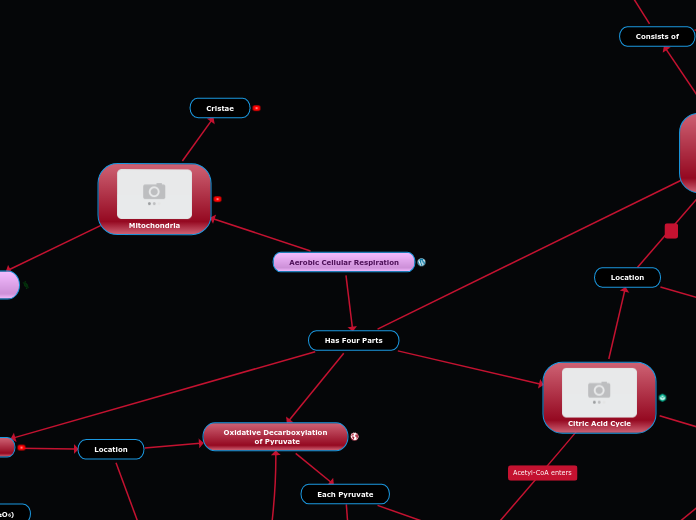Aerobic Cellular Respiration
Has Four Parts
Glycolysis
Location

Cell Cytosol
Glucose (C₆H₁₂O₆)
2 ATP invested
to produce
4 ATP

2 Pyruvate
2 NADH
Used in intermediate Process
Oxidative Decarboxylation
of Pyruvate
Each Pyruvate
Becomes Acetyl-CoA

Citric Acid Cycle
Each Acetyl-CoA
Produces
1 ATP
2 CO2
3 NADH

Electron Carriers
Used In
1 FADH2
Location

Mitochondrial
Matrix

Oxidative
Phosphorylation
Consists of

Electron Transport
Chain (ETC)

Creates a concentration
Gradient of H+
Used In
Chemiosmosis
Net 36-38 ATP Per
Glucose
Produces 6H20
as a final electron receiver

Mitochondria
Cristae
Anaerobic
Respiration

Lactic Acid
Fermentation

Alcohol Fermentation
